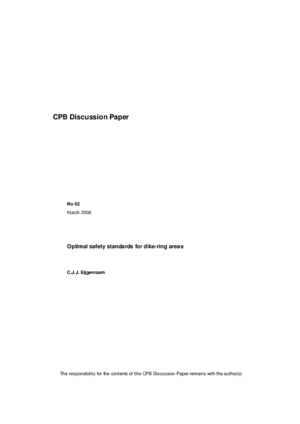Optimal safety standards for dike-ring areas
Wettelijke veiligheidsnormen tegen overstroming aan herziening toe
We are sorry, unfortunately there is no English translation of this page.
After the flood disaster in 1953 in the southwestern part of the Netherlands, Van Dantzig tried to solve the economic-decision problem concerning the optimal height of dikes. His formula with a fixed exceedance probability after each investment (Econometrica, 1956) is still in use today in cost benefit analysis of flood-protection measures. However, his solution is both incomplete and wrong. In the context of economic growth, not the exceedance probability but the expected yearly loss by flooding is the key variable in the real optimal safety strategy.
Under some conditions, it is optimal to keep this expected loss within a constant interval. Therefore, when the potential damage increases by economic growth, the flooding probability has to decline in the course of time in order to keep the expected loss between the fixed boundaries. The paper gives the formulas for the optimal boundaries for a more complicated problem which is more in line with engineering experience. One condition is that the rate of return at the moment of investment (FYRR) has to be zero (or positive). Then the net present value (NPV) of a safety investment will be very positive or even infinite. Therefore, in case of economic growth the well known NPV criterion in cost benefit analysis of a single project is not a sufficient criterion for investing.
An application of the model with the original figures for the dike ring Central Holland has been added as well as a recent application for dike ring areas along the river Rhine.
